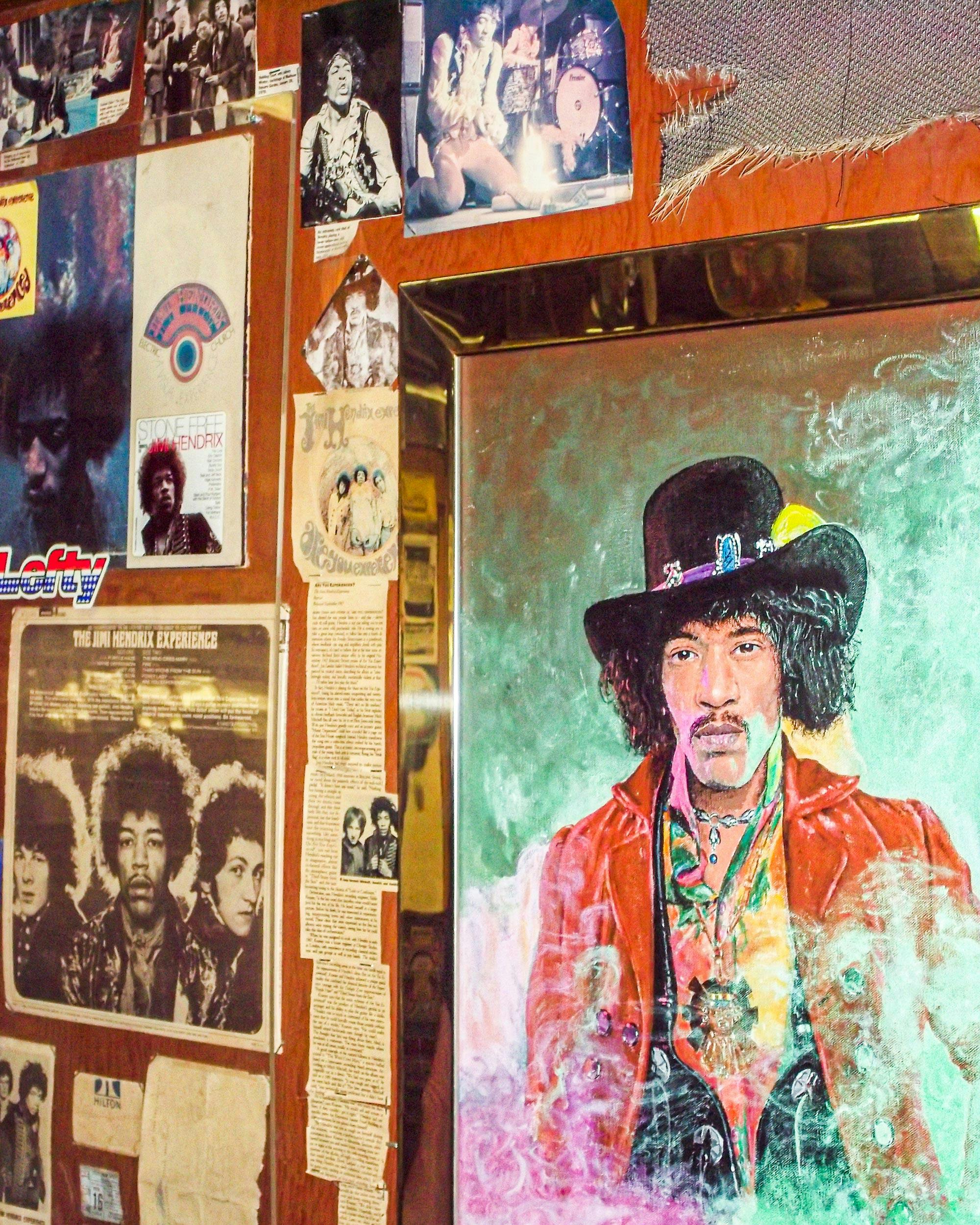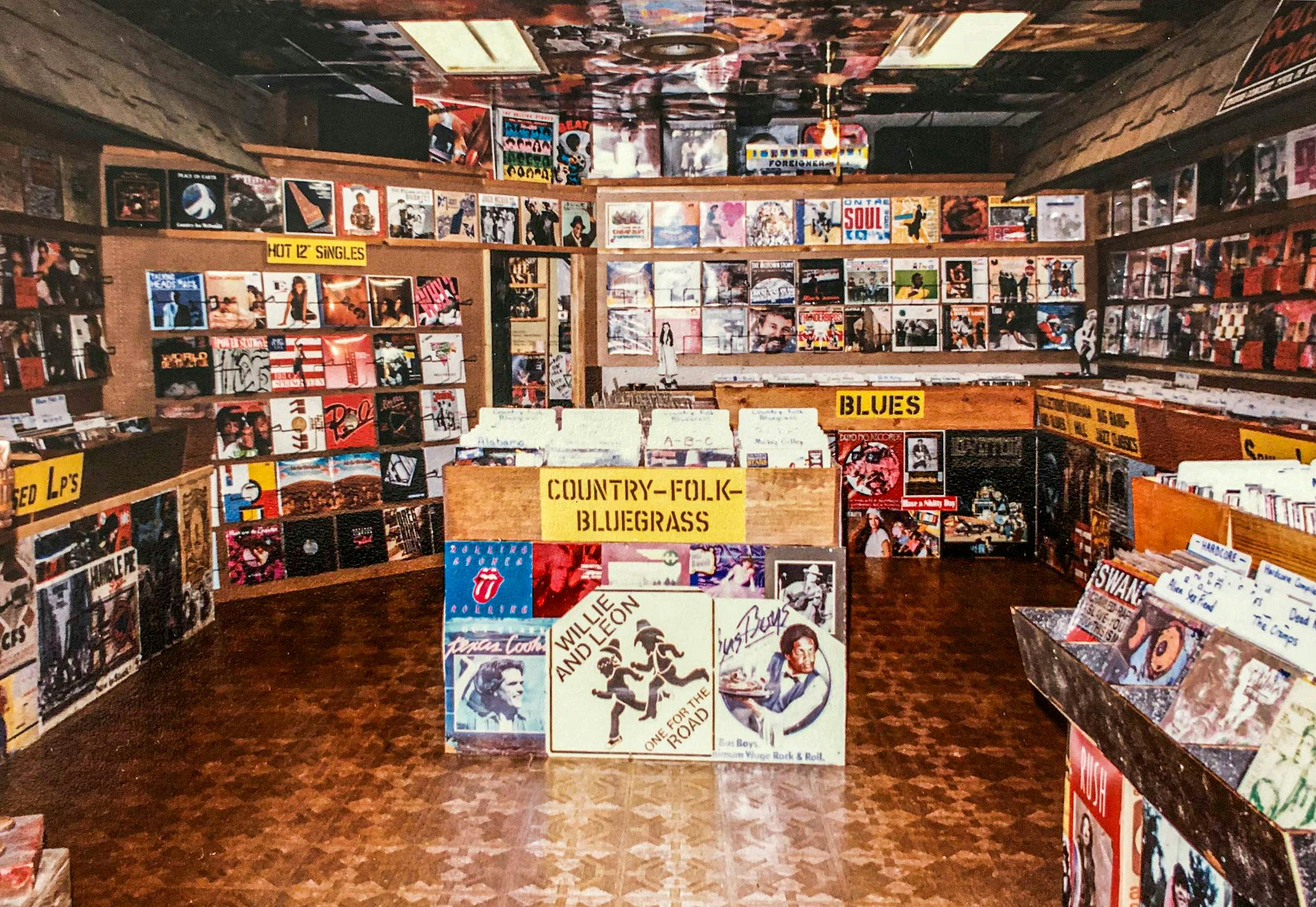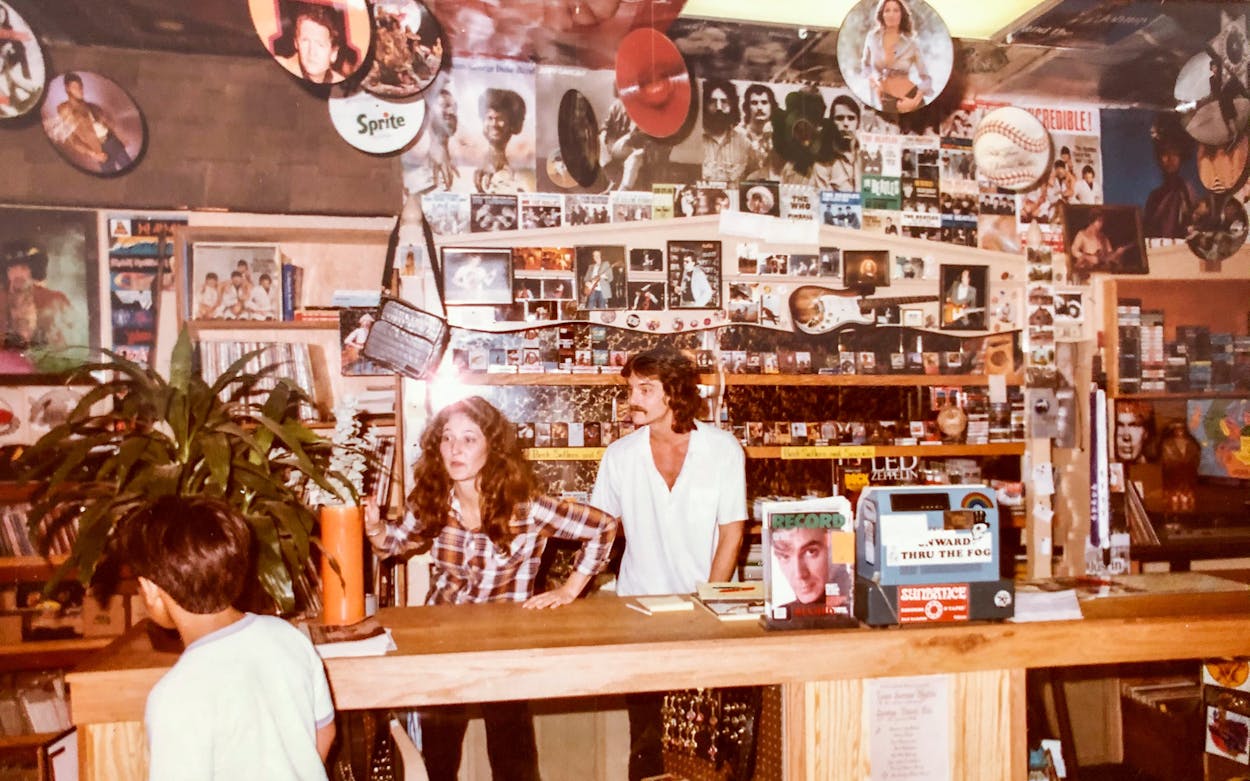How many music posters can fit in a forty-by-sixty-foot barn in Hill Country?
It’s a problem that Nancy Barnard, the former co-owner of San Marcos’s Sundance Records, is struggling to solve. “Fifteen hundred [posters]? Two thousand? We were reaching hoarder levels of stuff, if I’m being honest,” she says. And posters are just one part of her massive collection, which includes thousands of items of music memorabilia.
Barnard owned the beloved record store until 2012 with her late husband, Bobby Barnard, who died last August after thirty years as a fixture in the local music scene. Now Nancy has tasked herself and a former employee, Parker Wright, with getting Bobby’s archive of music posters, records, vintage T-shirts, and other memorabilia online—and, in news San Marcos music lovers were thrilled to learn, available for purchase. Barnard and Wright plan to launch the trove in batches on Instagram and at a series of in-person pop-up shops starting March 9 in San Marcos. They suspect it will take months or even years to release it all to the public, but it’s a passion project they’ve embarked on in honor of Bobby.
When a community Facebook page announced the project in January, nearly two hundred local music fans chimed in to share their excitement. “[Sundance was] more than just a store,” wrote one former customer. “This was the place to go back in my day,” wrote another.
Wright tells me that the collection includes “posters from big stars like Madonna and an entire stack of George Strait stuff, as well as really niche stuff that’s unique to Texas.” The list also includes promo flyers from underground Houston rap stars Chamillionaire and DJ Screw, concert posters from San Marcos’s own Cheatham Street Warehouse, and dozens of T-shirts from the early days of Antone’s, a historic blues club in Austin. In addition to straightforward music merch, there are oddities like a Corona beer–branded surfboard and a talking Master P doll, still in the box. It’s a museum-worthy collection that spans more than forty years and reflects the unmatched diversity and breadth of Texas music. When we spoke, Parker estimated he was about 3 percent into sorting and cataloging the entire collection after several weeks of work.

It’s a painstaking process, but Nancy is grateful to be minimizing her treasure trove. “I appreciate some blank walls,” she laughs. The couple always intended to sell part of the collection to bolster their retirement fund; now, with Sundance closed and Bobby no longer around to staple posters and flyers to a record store wall, the items have an added layer of Texas nostalgia. Posters, which make up the majority of the collection, will start at $15 and go up, reaching $100 to $1,000 for rare collectibles like an original promotional poster for Stevie Ray Vaughan’s 1989 album In Step or a framed 1982 Grateful Dead concert poster from Travis County’s Manor Downs.
Any record store that survived past the aughts is a marvel, but the old Sundance Records, which personally shepherded me through my teenage indie rock phase, was otherworldly. The smell of incense hit right as you walked through the chiming doorway. Life-size cardboard cutouts of Snoop Dogg and George Strait stood like living shrines, T-shirts and pipes were for sale at the counter, and the employees all had the requisite encyclopedic knowledge of music to guide you through the eclectic and wide-ranging record and CD collection.
“My parents told me that Neil Young’s Harvest record was the only one I needed,” says HalleyAnna Finlay Welch, who eventually started working at Sundance and whose parents owned Cheatham Street Warehouse until it was bought by Randy Rogers in 2016. “But Bobby and the people that I worked with were like, ‘Well, check out Zuma. Check out Alejandro Escovedo. Here are Jerry Jeff Walker’s B-sides.’”
Alan Edward Schaefer, editor at the Journal of Texas Music History at Texas State University in San Marcos, highlights the breadth of the music selection. “It was such a perfect regional record store,” he says. “You’d find everything from Houston rap to independent Central Texas labels like Sarg Records from Luling. Anything from Texas-Czech dance music to Chicano soul.”
Sundance opened in 1977, and when it closed in 2012, it held the title of longest-running record store in Central Texas—older than Waterloo in Austin. But the most mesmerizing treat for visitors was the store’s walls and ceiling, plastered with a kaleidoscopic collage of Bobby’s music memorabilia. Painstakingly assembled over many years, the tchotchkes made Sundance a piece of living art, a kind of Sistine Chapel of music history in a humble strip mall across the street from Texas State.
“It was his art, and it was very, very odd to look at, but there was a method to the madness,” says Barnard, noting that her husband’s artistic sensibilities were no accident. Bobby attended art school at Texas Tech before diving deep into the record store business. Nicknamed the Michelangelo of the Staple Gun by his employees, Bobby placed news clippings and magazine cutouts next to music posters from the same era. A storage closet door, covered with the obituaries of famous musicians and pop culture figures, came to be known as the Death Door. It was continuously updated as time (and celebrities) passed. His most prized possessions—a mesh strip from Jimi Hendrix’s destroyed amp at a 1968 concert in Fort Worth, and some original Beatles 45s—were also on display.

“He wanted people to see it all, to be exposed to it,” Barnard says. But what Sundance browsers may not have realized is that the masterpiece of a store was built with only some of Bobby’s vast collection. Behind the scenes, he had an even bigger treasure trove of music memorabilia in storage, keepsakes for potential use in his lifelong artwork.
Sundance was a lifeline to culture in San Marcos. The local college often attracted musical talent, and stars from Chamillionaire to Ray Wylie Hubbard did in-store events. Sundance influenced musicians such as Todd Snider and employed the likes of Bill Whitbeck, now the bassist for Robert Earl Keen. Other Texas musicians like Joe Ely, Omar and the Howlers, Terry Hendrix, and Lloyd Maines (father of Natalie) were also Sundance customers. When hunger for Houston rap swept through Central Texas in the nineties and early aughts, Sundance was an important stop for the underground distribution networks that dropped tapes and burned CDs.
After Sundance closed its doors because of unsustainable operating costs, Bobby carefully moved his precious collages to Sig’s Lagoon, a record store in Houston opened by a former Sundance employee and business partner, Tomas Escalante. There, Bobby spent weeks meticulously expanding the scope and size of the collages, which visitors can still see today.
Bobby and Nancy retired to the Hill Country, along with a massive estate of musical ephemera that Nancy says “literally filled up” that forty-by-sixty-foot barn—and some of the main house—with giant rolls and boxes. Bobby continued to enjoy browsing his favorite items and adding to his collection until the day he died of a stroke in August 2020.

The news of Bobby’s passing devastated music lovers in San Marcos and beyond. “My entire career, everything I’ve done, [was] just because I walked into a record store and talked to a guy about a Nick Drake record,” said Greg Ellis in an obituary that ran in the Houston Chronicle. Ellis, a former Sundance employee, now operates Groover’s Paradise in Austin.
By now, some of the memorabilia is rough around the edges with the feel of time spent in a record store. The posters are sun-faded from their former positions in window displays, or have tiny holes at the corners from being stapled to the wall. Some items still carry the signature smell of the store’s incense, says Wright.
Not everything from Nancy and Bobby’s collection will be for sale, however. “I’m keeping the Willies,” she says of her collection of posters from Willie Nelson’s Fourth of July Picnics. Many of the records will also be bequeathed to Sig’s Lagoon and Groover’s Paradise for safekeeping. “But there will be something for everyone.”
- More About:
- Music
- San Marcos






